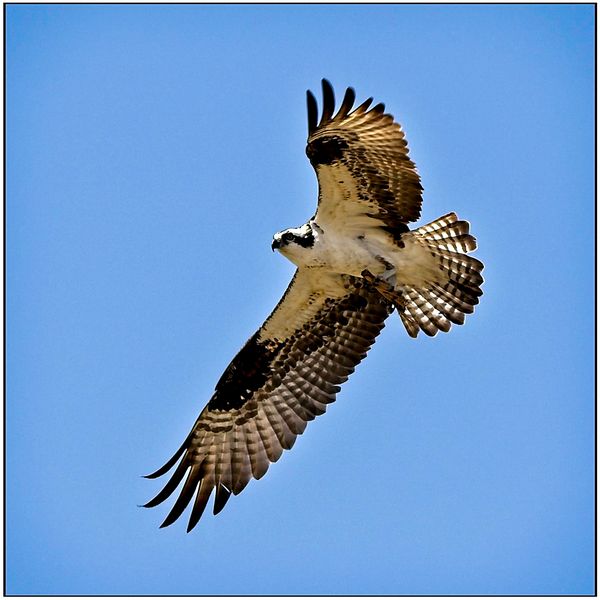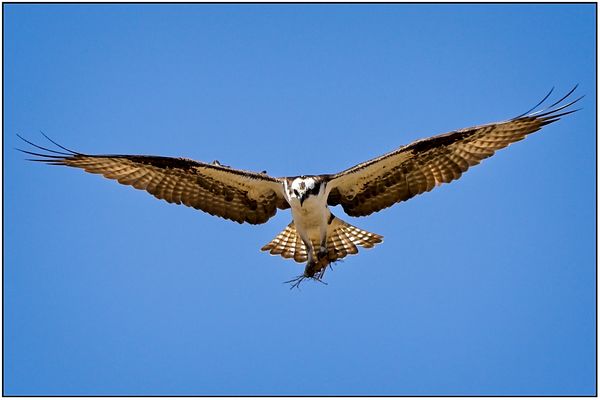Gimbal Head
Apr 13, 2021 07:39:42 #
tcthome
Loc: NJ
Most the time I shoot handheld also. For in the nest , take off &, landing or where any animal is doing a repetitive location thing or, being in a blind the tripod can help. If you can take your camera & tripod to a camera shop & try one out & move through the motion of photographing your subject. A gimbal usually works with a long lens & might be difficult to mount your camera on & get to your controls. A small fluid head might be better for your camera. The camera you have is pretty small compared to a DSLR with a 500-600mm lens, yes/no? .Have you tried raising the ISO & Shutter speed a little for in focus hand held photos? By the way, nice photo.
Apr 13, 2021 07:47:58 #
chaim wrote:
I'm an amateur bird photographer using a Sony RX10 IV bridge camera. My first tripod came with a ball head that was difficult to keep from slipping if even so slightly. I switched to a Manfrotto 128RC Micro Fluid Head. I'm basically happy with it but wonder if a gimbal head would give me more flexibility to quickly follow a bird as it flies.
Any feedback is greatly appreciated.
Here's an example of my photography.
Any feedback is greatly appreciated.
Here's an example of my photography.
While there are some good responses here, in short I do not think a gimbal head makes sense for that camera. With a permanent lens, you would be forced to attach the camera to the head using the tripod mount on the camera's baseplate, and that doesn't make sense.
Understand that a gimbal head is designed to work with the (presumably long and heavy) lens mounted directly onto it. In fact, if you look at any gimbal head, you will note that the lens mount (usually with a quick release plate) is perpendicular to the film/image chip plane. This is in order to get the camera/lens combo situated on the head such that it is balanced - making it easier to "swoop and turn" to follow whatever you are shooting. Hopefully the attached photo will make my point.
The camera model you mention does not have a lens-based tripod mount, so right off the bat you would have to jerry-rig a way to attach it.
Oh, and that is a great photo, by the bye.
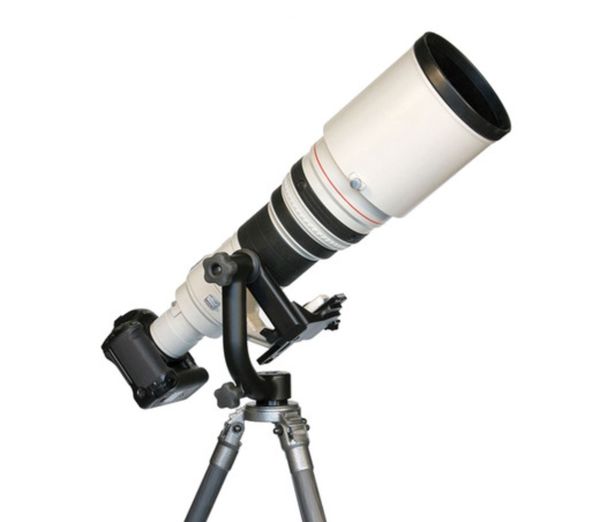
Apr 13, 2021 08:54:29 #
ialvarez50 wrote:
I do not use a tripod for bird photography, too restrictive. I use 400 ISO, Shutter speed proyority mode which is set to 1/1000 of a second and the camera sets the aperture, I also use AI servo focusing. All with the camera on my hands to follow a bird easily.


Apr 13, 2021 09:10:55 #
gvarner
Loc: Central Oregon Coast
Steve Perry on YouTube has a good video on what a gimbal head can do for you.
Apr 13, 2021 09:40:17 #
"...I'm more interested in getting them as they take off or just before landing. A tripod really helps here because I can keep it focused on the bird as long as it takes and be ready for it to move..." That helps clarify your "perceived" need chaim albeit I'm guessing once you start getting fabulous results you'll want to move forward to birds in flight... just saying... lol
Ok here is something that folks haven't mentioned yet... if/when you consider upgrading your kit with a long lens to work on your gimbal head please don't make the mistake of purchasing a "Pumper" i.e. a lens that changes length as it is zoomed (or even focused). Although they are much more "cost effective" than an IF lens.
This is a naive mistake I made early in my career... You absolutely want what is known as an IF lens (Internal Zoom/Focus). Reason? You'll never be able to determine a CG (Center of Gravity) to enable you to setup the lens to "Float" on the Gimbal. This is HUGE feature! My AF-S 200-400mm f/4 IF ED VR virtually "floats" on my Wimberley. As such it is so easy to swing through both a vertical and horizontal arch and a joy to use.
Again, penny wise pound foolish adage comes to the fore...
All the best chaim, you've gotten some stellar feedback on your query... Take time to absorb/contemplate, k?
Ok here is something that folks haven't mentioned yet... if/when you consider upgrading your kit with a long lens to work on your gimbal head please don't make the mistake of purchasing a "Pumper" i.e. a lens that changes length as it is zoomed (or even focused). Although they are much more "cost effective" than an IF lens.
This is a naive mistake I made early in my career... You absolutely want what is known as an IF lens (Internal Zoom/Focus). Reason? You'll never be able to determine a CG (Center of Gravity) to enable you to setup the lens to "Float" on the Gimbal. This is HUGE feature! My AF-S 200-400mm f/4 IF ED VR virtually "floats" on my Wimberley. As such it is so easy to swing through both a vertical and horizontal arch and a joy to use.
Again, penny wise pound foolish adage comes to the fore...
All the best chaim, you've gotten some stellar feedback on your query... Take time to absorb/contemplate, k?
Apr 13, 2021 09:47:32 #
billnikon
Loc: Pennsylvania/Ohio/Florida/Maui/Oregon/Vermont
chaim wrote:
I'm an amateur bird photographer using a Sony RX10 IV bridge camera. My first tripod came with a ball head that was difficult to keep from slipping if even so slightly. I switched to a Manfrotto 128RC Micro Fluid Head. I'm basically happy with it but wonder if a gimbal head would give me more flexibility to quickly follow a bird as it flies.
Any feedback is greatly appreciated.
Here's an example of my photography.
Any feedback is greatly appreciated.
Here's an example of my photography.
The best way to have flexibility to quickly follow a bird in flight is by hand holding. The Sony RX10 is very easy to hand hold.
I would suggest practicing panning and shooting cars as they go by until you get the hand of it, then start on birds in flight.
A minimum shutter speed should be 1/1500 sec. or better. I like to shoot at 1/2500 sec. on higher.
As you practice panning you will get better, try to zoom out almost all the way to practice your panning technique.
In the Florida Everglades, the folks with the tripods miss the shots and the one's hand holding get the winners.
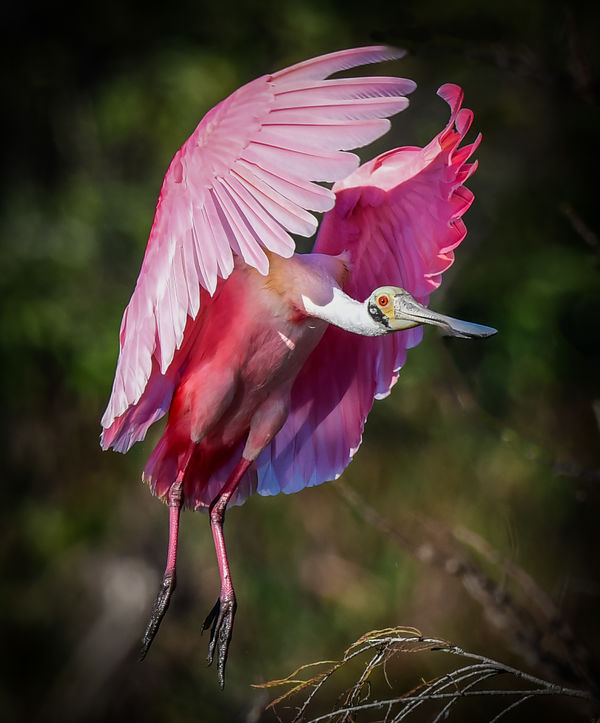
Apr 13, 2021 09:49:35 #
chaim wrote:
Thanks for your suggestions.
I'm already using a lightweight (2.4#) camera but can't get the handheld shots as sharp as I can with a tripod. Maybe "birds in flight" is not the best way to describe what I'm looking for. I'm more interested in getting them as they take off or just before landing. A tripod really helps here because I can keep it focused on the bird as long as it takes and be ready for it to move.
I'm already using a lightweight (2.4#) camera but can't get the handheld shots as sharp as I can with a tripod. Maybe "birds in flight" is not the best way to describe what I'm looking for. I'm more interested in getting them as they take off or just before landing. A tripod really helps here because I can keep it focused on the bird as long as it takes and be ready for it to move.
I also shoot a Sony RX10MIV. It’s my kayak camera so I never use it with a tripod. I suggest bumping up the ISO so your shutter speeds are faster. I regularly shoot that camera at 800 ISO. Yes with the 1” sensor that will lead to some noise, but Topaz Denoise AI takes care of that.
Apr 13, 2021 11:06:32 #
MDI Mainer wrote:
So do I, but unfortunately I don't believe that the Nest Gimbal is currently being imported into the US. A great product at a very good price. Still available from retailers abroad though, e.g., India and Australia, and of course from a few exporters in China.
Today I'd probably opt for a Movo GH800 which looks to be pretty similar.
Today I'd probably opt for a Movo GH800 which looks to be pretty similar.
I bought the GH800 a couple years ago and though for the money I’m pleased with it, I rarely use it. For me shooting BIF is somewhat of a chaotic scenario of up and down and body twisting and spinning on by heals unless the subject accommodates by not darting crazily about. So, without the gimbal on a tripod, I usually use a Sigma 100-400 C on a Canon 7d2 in AI Servo and continuous high speed shutter. Unless I’m startled and see nothing but the back side of my subject, I can usually get the shot.
From a little over a week ago.....
Apr 13, 2021 11:18:40 #
amfoto1
Loc: San Jose, Calif. USA
chaim wrote:
I'm an amateur bird photographer using a Sony RX10 IV bridge camera. My first tripod came with a ball head that was difficult to keep from slipping if even so slightly. I switched to a Manfrotto 128RC Micro Fluid Head. I'm basically happy with it but wonder if a gimbal head would give me more flexibility to quickly follow a bird as it flies.
Any feedback is greatly appreciated.
Here's an example of my photography.
Any feedback is greatly appreciated.
Here's an example of my photography.
No, a gimbal tripod head WILL NOT WORK with your camera and usually isn't a good choice for birds in flight, in particular.
Gimbals are designed for use with lenses that have tripod collars. Those are typically only found on interchangeable telephoto lenses (for DSLRs and mirrorless). I'm not aware of any "bridge camera" like yours that has a tripod mount collar on the lens.
In fact, it would be impossible to mount your camera to most gimbal heads.
Gimbal heads also are generally best used with very large and heavy lenses. They work well with 300mm f/2.8 and larger. I regularly use with a 100-400mm too, though it's doesn't "balance" quite as well on the gimbal, as do heavier and longer lenses. I do not use my gimbal heads with 70-200mm f/2.8 and 300mm f/4 lenses that are around 3 lb. or less. They balance very poorly on a gimbal.
For birds in flight, I find hand holding best. There are exceptions, of course, but most bird flight is too erratic to follow well with a lens on a tripod, regardless the type of head being used. MAYBE a monopod... I use one sometimes for sports such as auto racing, equestrian events... But those subjects are also moving along predictable paths, unlike most birds.
Several responses above praise various gimbals or their use in general... and they aren't wrong. Gimbal heads can be very useful with the right cameras and lenses. However those earlier responses didn't consider the camera you're using. They simply aren't made for use with non-interchangeable lens "bridge" cameras like your RX10.
EDIT: In a followup you mention that your camera is light weight. Many people actually find that "lighter" often doesn't translate into "steadier" shots. In fact, I add battery grips to my DLSRs in part to increase their weight and mass, for steadier shots. (This also helps the camera balance better when fitted with a large lens on a gimbal head. Of course, the grip also doubles battery capacity, provides a comfortable means of holding the camera in vertical orientation and provides a secondary set of controls.) I currently use five "full size" DSLRs for work, each of which weigh around 2 lb. for the camera and grip alone... plus the weight of any lens (some of the largest of which weigh 8 lb.) I also have a small mirrorless "travel, hiking, street photography" kit... a body with four compact lenses and a few accessories... that entire kit weighs less than even one of the DSLRs with one of the more moderate size lenses. Frankly, I find it a lot more difficult to get a steady shot hand holding that little mirrorless camera, versus hand holding one of the DSLRs.
Apr 13, 2021 11:34:28 #
Not quite impossible to mount an RX or similar camera to a gimbal and achieve some reasonable degree of balance if you had good reason to do so. You could always use the camera mount and a telephoto support like this. Admittedly a bit awkward but no reason this wouldn't work for a fixed lens camera too. Still have the issue of the center of gravity changing as the lens extends.
https://www.ebay.com/itm/L200-Long-Focus-Telephoto-Lens-Support-Holder-w-Quick-Release-PU50-Plate-Kit-US/393044755785?hash=item5b834b0549:g:taAAAOSwmFVd1Bmg
https://www.ebay.com/itm/L200-Long-Focus-Telephoto-Lens-Support-Holder-w-Quick-Release-PU50-Plate-Kit-US/393044755785?hash=item5b834b0549:g:taAAAOSwmFVd1Bmg
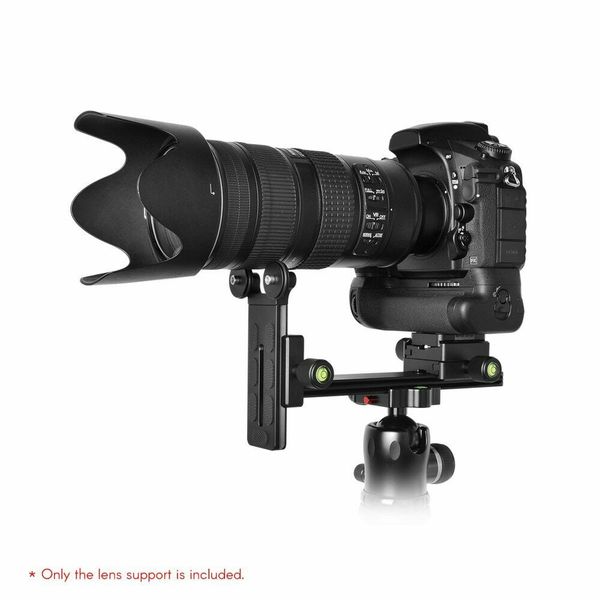
Apr 13, 2021 11:56:39 #
MDI Mainer wrote:
Not quite impossible to mount an RX or similar cam... (show quote)
That won’t work with an RX10MIV. Most of the lens moves as you zoom. That particular setup will only work with an internal zoom.
Apr 13, 2021 12:05:48 #
amfoto1
Loc: San Jose, Calif. USA
MDI Mainer wrote:
Not quite impossible to mount an RX or similar camera to a gimbal and achieve balance if you had good reason to do so. You could always use the camera mount and a telephoto support like this. But admittedly a bit awkward. No reason this wouldn't work for a fixed lens camera too.
https://www.ebay.com/itm/L200-Long-Focus-Telephoto-Lens-Support-Holder-w-Quick-Release-PU50-Plate-Kit-US/393044755785?hash=item5b834b0549:g:taAAAOSwmFVd1Bmg
https://www.ebay.com/itm/L200-Long-Focus-Telephoto-Lens-Support-Holder-w-Quick-Release-PU50-Plate-Kit-US/393044755785?hash=item5b834b0549:g:taAAAOSwmFVd1Bmg
"But admittedly a bit awkward."
Ya think?
How would you deal with the roughly 6 inch change in the length of the RX10's lens when it's zoomed from fully retracted out to its longest focal length? Would you set up at a particular focal length before attaching to that device and then just leave it there, unable to zoom?
Not to mention you would ALSO need to put an L-bracket on the camera if you ever want to shoot in portrait orientation. Even then, each time you switch from landscape to portrait or vice versa would require unmounting the camera from the long lens mount, remounting it in the new orientation, possibly needing to adjust the long lens mount.
So you'd end up with an the camera fitted to an L-bracket, which in turn is fitted to that long lens support, which in turn is fitted to the gimbal head.
I still think a monopod would be a better solution. Though for BIF I think you'd need a monopod head to allow tilt movement.
Another possibility might be a "shooting stick", like some hunters use to rest a rifle. (https://www.ebay.com/itm/Allen-Company-Shooting-Stick-Monopod-Adjustable-in-Height-21-5-to-61-inches/363314466289?epid=2254433878&hash=item54973acdf1:g:3e0AAOSwOnVgQ5Oo)
Or, just up the ISO a bit and hand hold the camera.
Apr 13, 2021 12:12:53 #
SuperflyTNT wrote:
That won’t work with an RX10MIV. Most of the lens moves as you zoom. That particular setup will only work with an internal zoom.
Well I don't think most super zooms on the market today are IF. So it's no different than using say a Sigma or Tamron 150-600 on a gimbal, which is a commonly seen setup. The balance is not perfect and constant, but it works better than handholding if you want/need the gimbal effect. You can position the support far enough forward on the fixed part of the RX lens to improve the balance point, since we're not really talking about a big piece of glass.
Apr 13, 2021 13:37:16 #
You will find that a gimbal is better than a ball head for wildlife. Wildlife requires longer glass and when properly balanced the gimbal is the better option. As far as using it for BIF you will find it too restrictive. The issue is not flat panning but when the bird is changing altitude. Going from a low profile when the bird is high to trying to stand on toes as it nears the earth will not be steady nor smooth. The tripod attachment point is a hindrance. If the action is not hot and heavy I will set up the tripod and gimbal and rest the lens foot on the rig without attaching it. That puts the gear up near the eye without having to hold it. Then it can be snatched up the short distance to the eye for the shot(s). You can easily simulate the issue by taking your tripod, even with a ball head, and with eye to viewfinder try to make a 45 degree move from 60 feet top right to 5 feet bottom left of a perceived target of 75 feet. Inefficient and awkward. And you will often kick the legs as others have mentioned.
Apr 13, 2021 14:26:59 #
MDI Mainer wrote:
Well I don't think most super zooms on the market today are IF. So it's no different than using say a Sigma or Tamron 150-600 on a gimbal, which is a commonly seen setup. The balance is not perfect and constant, but it works better than handholding if you want/need the gimbal effect. You can position the support far enough forward on the fixed part of the RX lens to improve the balance point, since we're not really talking about a big piece of glass.
Yes, I use a Nikon 200-500 on the Wimberly monogimbal on a monopod. The difference is thos lenses attach directly to the gimbal with the tripod foot and collar. It’s a completely different thing.
If you want to reply, then register here. Registration is free and your account is created instantly, so you can post right away.




